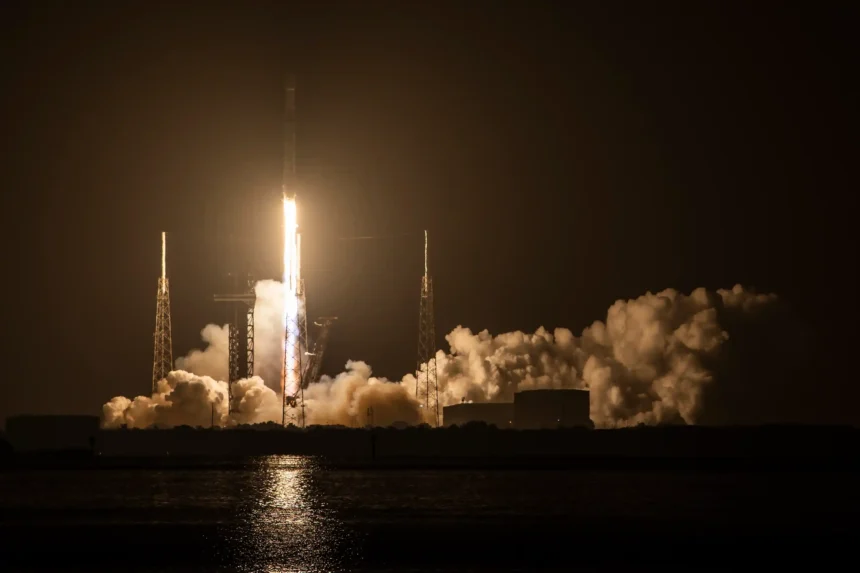Vandenberg, California, July 27, 2025 – SpaceX launched another set of 24 Starlink satellites early this morning, adding to their ever-growing internet network in space. The Falcon 9 rocket blasted off from Space Launch Complex 4 East at Vandenberg Space Force Base right after midnight, local time. The skies over California lit up as the rocket lifted off at 12:31 a.m. EDT (9:31 p.m. PDT on July 26). This mission marks SpaceX’s second Starlink launch in less than 24 hours, showing just how fast they’re building out their constellation.
The rocket’s first stage had done this dance before—making its 19th trip to space and safely landing on the droneship “Of Course I Still Love You” out in the Pacific about eight minutes later. Onlookers cheered the booster’s perfect return, a routine now but still wild to see.
Up top, the Falcon 9 carried 24 next-gen Starlink satellites, version 2 minis. These are meant to boost coverage, especially for people in remote areas and the polar regions. Once the rocket reached space, the second stage released the satellites into orbit as planned—another step in SpaceX’s goal to beam the internet almost anywhere on the planet.
Today’s launch was the company’s 95th mission of the year, most of them flying Starlink satellites. With these, there are now over 8,000 Starlink units in orbit, according to expert trackers.
This wasn’t just a routine flight. Just days ago, users worldwide felt a big Starlink outage. SpaceX apologized, promising fixes. With new satellites joining the mix, Starlink’s coverage and reliability should keep improving.
This constant pace is impressive. SpaceX pulls off these missions back-to-back, with a tight schedule and mostly clear weather. The company is staying ahead in the satellite race, aiming to connect far-flung places and keep internet signals steady even during power cuts or storms.
People living in rural spots, scientists in the Arctic, and travelers at sea could soon get faster, steadier web thanks to nights like this. Spotting the satellites in the night sky, you might just see a bright trail crossing over—proof that another batch has launched.







